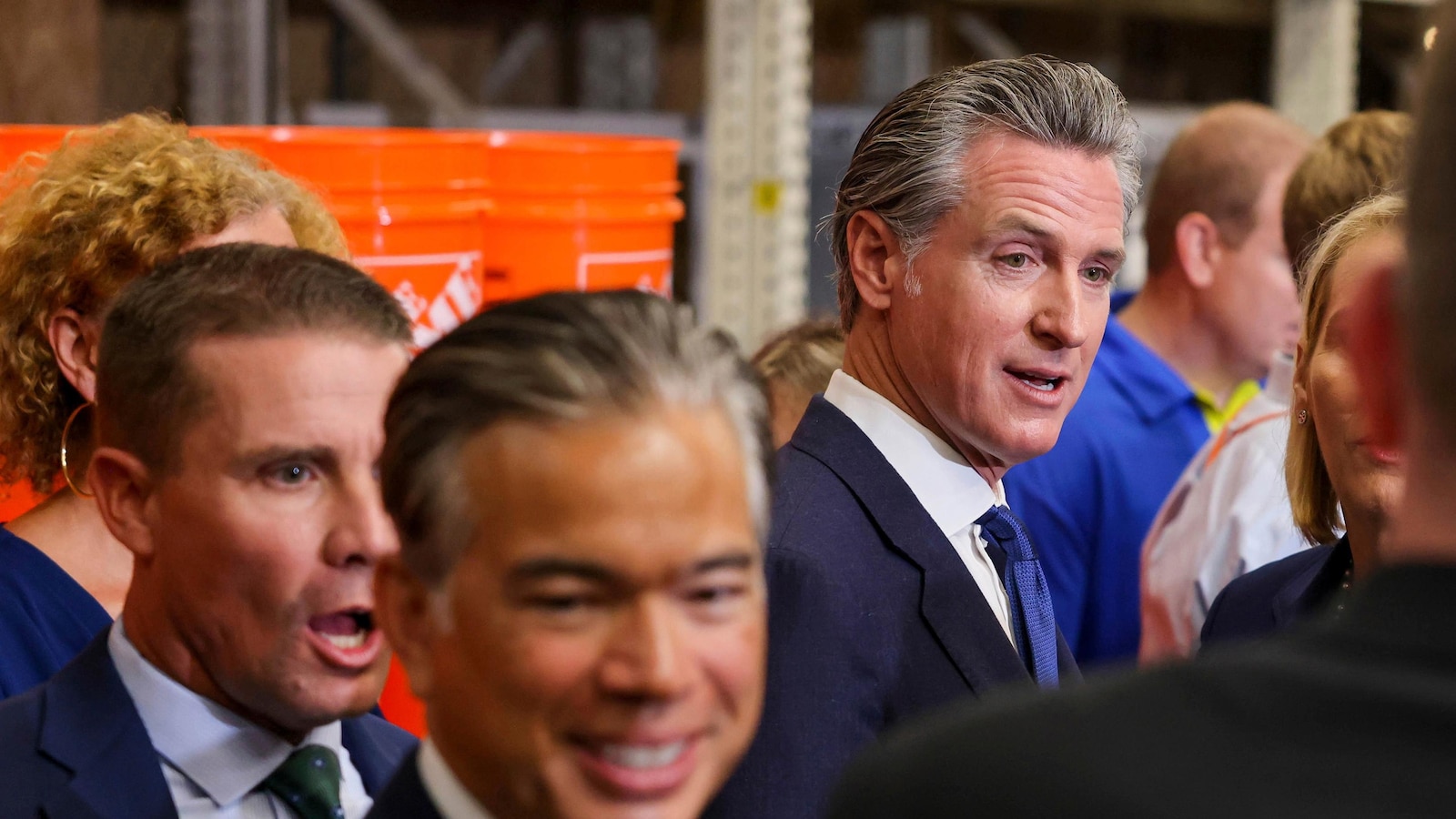Curbing Smash-and-Grab Robberies: California Takes Action
In a bipartisan effort to combat the surge in smash-and-grab robberies and property crimes, California Governor Gavin Newsom recently signed a package of 10 bills into law. This legislation aims to strengthen enforcement against repeat offenders, increase penalties for professional reselling schemes, and crack down on cargo thefts.
The Crisis of Smash-and-Grab Robberies
Large-scale smash-and-grab thefts have become a disturbing trend in California. Groups of individuals brazenly enter stores, stealing goods in plain sight. These crimes, often captured on video and shared on social media, have exposed the severity of retail theft in the state.
The new legislation addresses this crisis by allowing law enforcement to combine the value of goods stolen from different victims, enabling them to impose harsher penalties. Authorities can also arrest individuals based on video footage or witness statements.
Expanding the Enforcement Toolbox
The package also tackles cargo thefts and closes a loophole that hindered the prosecution of auto thefts. Online marketplaces like eBay and Nextdoor are now required to collect bank account and tax identification numbers from high-volume sellers, making it easier to trace stolen goods.
Retailers now have the option to obtain restraining orders against convicted shoplifters, further empowering them to prevent repeat offenses.
The Balancing Act: Punitive Measures vs. Rehabilitation
While some progressive Democrats expressed concerns about the punitive nature of certain measures, the package is designed to strike a balance between deterrence and rehabilitation.
The legislation allows prosecutors to combine multiple thefts from different locations into a felony charge, targeting ringleaders who organize large-scale robberies. Penalties for smash-and-grabs and organized reselling operations have also been stiffened.
However, lawmakers emphasize that the focus remains on dismantling criminal organizations rather than criminalizing low-income individuals or those with substance use issues.
The Political Landscape: Democrats Grapple with Crime Concerns
Tackling crime in California has become a complex challenge for state Democrats, who have long championed progressive policies to reduce incarceration and invest in rehabilitation. However, the surge in smash-and-grab robberies and the mounting criticism from Republicans and law enforcement have forced Democrats to address the issue more forcefully.
Governor Newsom initially proposed a competing ballot measure to counter Proposition 36, a tough-on-crime initiative backed by district attorneys and businesses. However, he later withdrew the plan and pledged to actively oppose Proposition 36, fearing its potential to disproportionately impact marginalized communities.
Quantifying the Problem: A Lack of Data
Estimating the extent of retail crime in California is challenging due to the lack of local data. Major store closures and the need to secure everyday products behind plexiglass serve as indicators of a growing problem.
While crime data shows an increase in shoplifting in the San Francisco Bay Area and Los Angeles, experts remind that crime rates remain lower than in previous decades.
The California Highway Patrol: A Key Partner in Combating Crime
The California Highway Patrol is actively involved in the fight against organized retail crime. Since 2019, the CHP has recovered $45 million in stolen goods and arrested nearly 3,000 individuals.
Conclusion: A Determined Response to a Persistent Problem
California’s recent legislative package represents a comprehensive effort to curb the escalating problem of smash-and-grab robberies and property crimes. The new laws provide law enforcement with enhanced tools, crack down on organized crime, and protect retailers.
While the debate over the appropriate balance between punishment and rehabilitation continues, the latest measures signal a strong determination to restore safety and prevent the worsening of a troubling trend.
